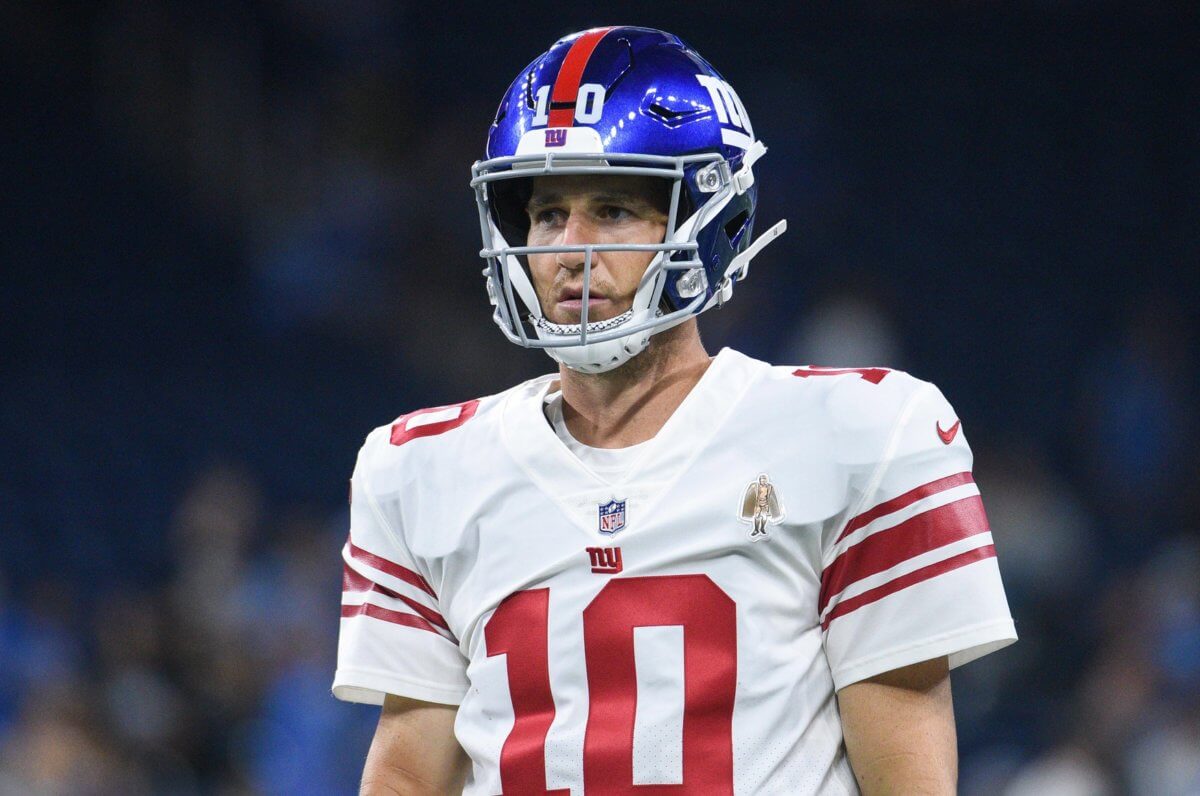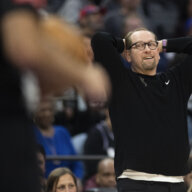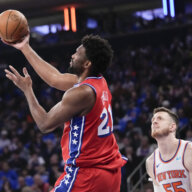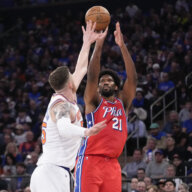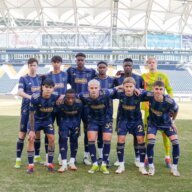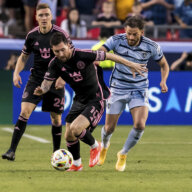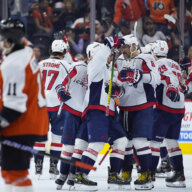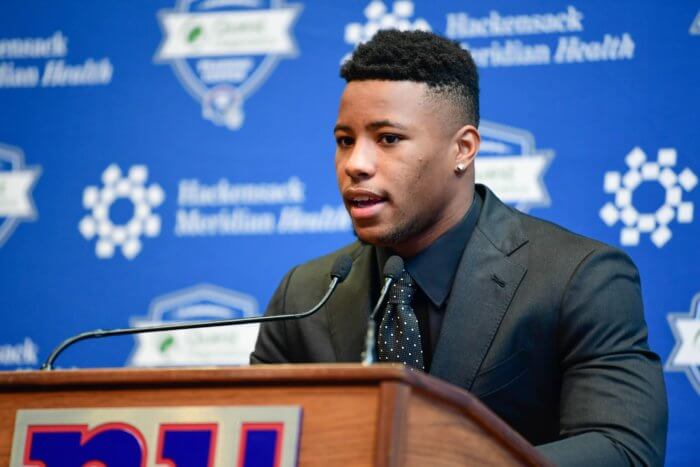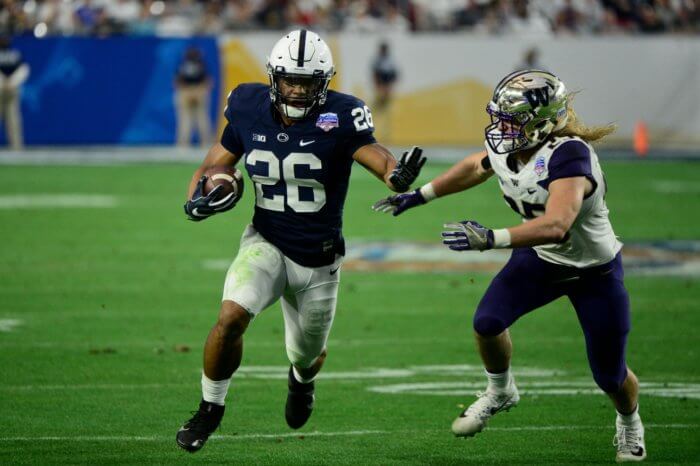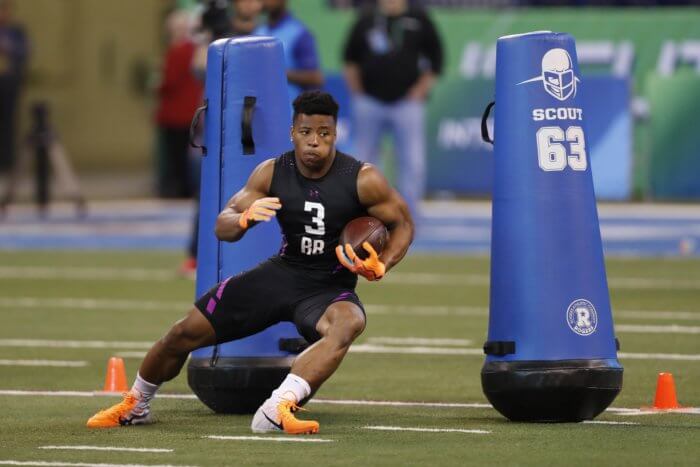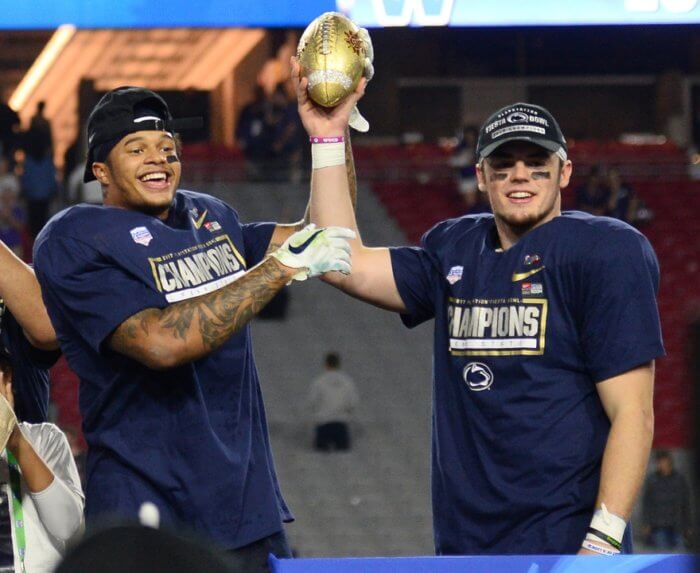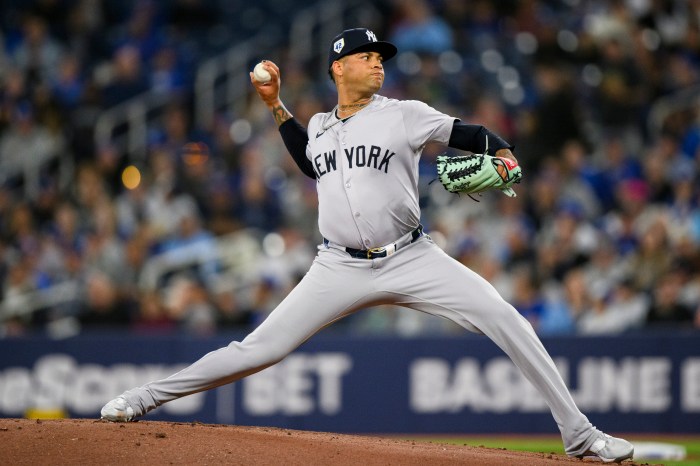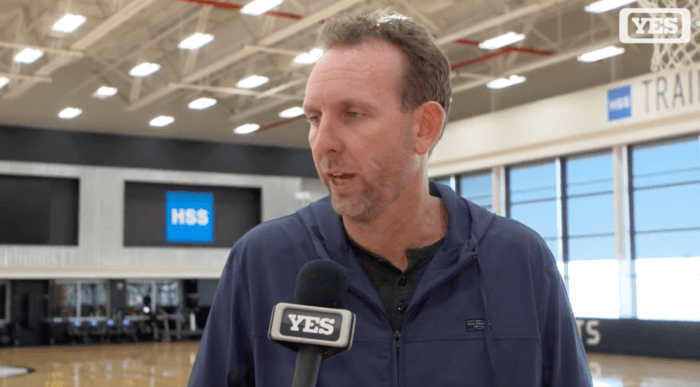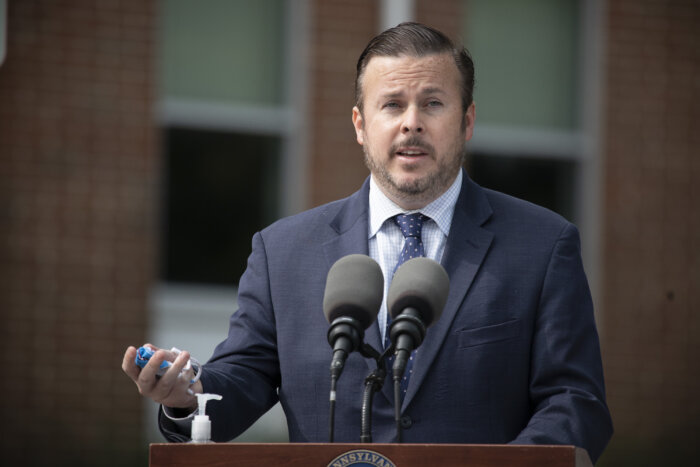Continuing on to the final rival in the NFC East, today we will be starting our examination of the New York Giants. The 2018 off-season included a plethora of moving parts for Big Blue, including a new coaching staff, new star running back and new pieces on the offensive line. The constant is two-time Superbowl MVP Eli Manning. After a down year in 2017, will the new additions help him regain his former glory? Let’s take a look.
Eli Manning’s performance in 2018 will really come down to four factors: three modifications, and one constant. As with any quarterback, the two most important contributing elements to success are a solid offensive line and a contributory run game. Last season, the Giants had neither. In the off-season, new GM Dave Gettleman brought in a new – old – left tackle in Nate Solder, former Jacksonville guard Patrick Omameh and spent a second-round pick on mauling guard Will Hernandez. Whether you agree with the big contract handed to Solder or not, he will certainly be an upgrade over former left tackle Ereck Flowers, who continued to look lost in his third season. The new look New York offensive line will be examined in further detail in a future article, but on the surface, the hope is Eli will have a bit more time to get the ball off this season. While Manning is one of the more consistent passers in the league, over the last three seasons his passer rating has taken a –17.0 hit when under pressure. According to Football Outsiders, Eli was the 17th best QB in variance while under pressure last season. Following the 2014 season – one of Eli’s better statistical years – PFF did a study on quarterback efficiency in relation to time in the pocket.
| Seconds | Rank | Yards/ Att | Comp % | Accuracy % | Success Rate | QB Rating |
| <2.0 | 10th | 5.8 | 68.1% | 82.0% | 39.5% | 80.7 |
| 2.1-2.5 | 41st | 6.1 | 53.5% | 60.8% | 34.4% | 45.3 |
| 2.6-3.0 | 30th | 7.8 | 58.9% | 66.4% | 38.8% | 77.8 |
| 3.1-3.5 | 6th | 9.9 | 64.1% | 72.6% | 43.0% | 89.2 |
| 3.5+ | 38th | 6.3 | 41.5% | 52.7% | 25.0% (5th) | 70.7 |
Throughout his career, the younger Manning brother has mimicked his older brother’s efficiency diagnosing defenses, determining blitzes and offloading short, quick passes. Thus, the incredible 68.1% completion percentage within a 2 second margin actually makes a lot of sense. In terms of success rate, however, the sweet spot is between 3.1 and 3.5 seconds, where Eli was the 6th best passer in 2014. His rank with the highest percentile of time in the pocket is deceptive; he quietly had the 5th highest success rate. The quarterback is at his most deadly when he has the time to launch passes downfield in an uncluttered backfield, or off play action. Accordingly, in 2015 Manning’s passer rating saw an increase of 12.8 when in a clean pocket. While the Giants’ offensive line was atrocious last season, and rightfully shouldered the blame for the most of the offence’s struggles, their quarterback only faced pressure on 24.9% of passing plays, 5th least in the league. This was mostly due to play calling. Former head coach Ben McAdoo’s playbook was notoriously simple and featured more than its fair share of short passes. He used the same personnel (3WR, 1TE, 1RB) for 91.6% of offensive plays in 2016. This season should be different.
The “Shurmur Effect” is a catchphrase which has reverberated around the league over the past half-decade alluding to the success that new Giants’ head coach Pat Shurmur has had milking the most out of his quarterbacks. As an offensive coordinator, he excels at playing to the strengths of his personnel, something McAdoo seemingly refused to do in his tenure. Eagles fans will be familiar with the success he had with Michael Vick, Nick Foles and Sam Bradford while in Philadelphia. Most recently, he turned journeyman Case Keenum into a playoff-caliber quarterback. Due to thorough scheming and some talented pass-catchers, Keenum had the luxury of 42 open throws – third most in the NFL – from 10-19 yards last season according to Pro Football Focus. That was nearly double the amount Eli had. Where Shurmur should help the most is getting Eli back to heaving bombs down the field.
Statistically, this has recently been coined: “big-time throw” ability. If you watched either of the Giants’ semi-recent Superbowl wins, the plays that stand out are Eli’s iconic deep-ball slings followed by equally spectacular catches. Even in more recent history the Odell Beckham Jr. catch comes to mind. Roger Lewis’ overtime catch against the Chiefs last season being another example. Nevertheless, a study from PFF ranked Manning 32nd in big-time throw percentage for 2018. In fact, he erred on the side of caution for most of the year, resulting in more paltry numbers than we are used to seeing from the two-time world champ. The Shurmur advantage also generally includes a decline in interceptions, which bodes well for Eli. With habitually big-time throw quarterbacks, you accept some risk for the prospect of reward. Any opportunity to cut mistakes is therefore crucial. Moreover, the deep-ball offence will be instantly upgraded with the return of OBJ.
The final change to the Giants’ offence that will play a role in Manning’s performance is the aforementioned run-game. The New York front office selected powerhouse Penn State product Saquon Barkley with the number 2 overall in this year’s draft. If for whatever reason you haven’t seen this young man’s highlights, open a new tab in your browser and take the time to watch them. Tagged as the most complete running back prospect in years, Barkley figures to be an upgrade as a rusher and as a receiver out of the backfield. As a matter of fact, a popular PFF metric in circulation highlights the influence the Shurmur effect had on former Vikings running back Jerick McKinnon, who had a career year in 2017. Following Saquon’s selection Good Morning Football host Kay Adams tweeted out:
✔️Eli WITH a Top 10 run game:
51-29 record (.638)✔️Eli WITHOUT a Top 10 run game:
52-66 record (.441)Hiiii @saquon! 👀⭐️ #giants #nfl #saquad
— Kay Adams (@heykayadams) July 26, 2018
While I generally tend to agree with Adam’s assessments, it seems quite straightforward that a top ten run game will elevate the play of any quarterback and the record of any team. This series wouldn’t be what it is without diving into the numbers.
| Total Rush Yds | Yards/ATT | Pass Yards | TD:INT | Comp % | Team Record | |
| 2017 | 1549 (26th) | 3.9 (22nd) | 3468 | 19:13 | 61.6% | 3-13 |
| 2016 | 1412 (29th) | 3.5 (30th) | 4027 | 26:16 | 63.0% | 11-5* |
| 2015 | 1609 (19th) | 4.0 (18th) | 4432 | 35:14 | 62.6% | 6-10 |
| 2014 | 1603 (23rd) | 3.6 (30th) | 4410 | 30:14 | 63.1% | 6-10 |
| 2013 | 1332 (29th) | 3.5 (30th) | 3818 | 18:27 | 57.5% | 7-9 |
| 2012 | 1862 (14th) | 4.6 (7th) | 3948 | 26:15 | 59.9% | 9-7 |
| 2011 | 1427 (32nd) | 3.5 (32nd) | 4933 | 29:16 | 61.0% | 9-7*+ |
| 2010 | 2200 (6th) | 4.6 (7th) | 4002 | 31:25 | 62.9% | 10-6 |
| 2009 | 1837 (17th) | 4.1 (20th) | 4021 | 27:14 | 62.3% | 8-8 |
| 2008 | 2518 (1st) | 5.0 (1st) | 3238 | 21:10 | 60.3% | 12-4* |
| 2007 | 2148 (4th) | 4.6 (3rd) | 3336 | 23:20 | 56.1% | 10-6*+ |
*Reached Playoffs +Won Superbowl
The season with the best run offence did indeed result in the best team record, but what of Eli’s performance? The statistics are incredibly difficult to decipher or infer any consistent correlation. Quite obviously, when the running game is lackluster, Eli is forced to throw more, which results in more yards – 2011, 2014, 2015. 2013 was the QB’s worst statistical season, and should perhaps be examined as an anomaly of its own. Nonetheless, in terms of yards there seems to be no definitive interrelationship between total rush yards and total passing yards – besides the obvious inverse relationship due to volume. While not a perfect analysis, Manning’s posted touchdown to interception ratio in years with bottom tier rushing attacks is telling. A snapshot from 2012-2016 provides the best example. Even with a 6-place jump in total rushing yards from 2013 to 2014, Eli posted 13 less interceptions. Then with a 10-spot drop in 2016, he threw two more interceptions and nine fewer touchdowns than the previous season. In the two seasons with the worst statistical run games – 2016 and 2011 – the Giants made the playoffs, and won the Superbowl, respectively. Go figure. All this is to say that a boost to the ground game doesn’t necessitate a huge growth in production under center, however, it should result in fewer turnovers.
The final significant influence on the Giants’ passing game is the age of their quarterback. While Eli has done an admirable job keeping father time at arm’s length, and his play style doesn’t lean on his athleticism; he is 37. I am going to bring back the chart I used in the article about new Redskins’ quarterback Alex Smith. According to Pro Football Reference, statistics say that Eli is not likely to take a huge leap in production in his 15th season. Beyond that, forecasts for the 2019 season look bleak. Unless the combination of Shurmur and Saquon can in fact reduce Manning’s mistakes, he may be forced to become a more conservative passer in 2018.
Best Case: At this point in his career Eli has made his proverbial floor and ceiling quite clear. The best-case scenario for 2018 is a season similar to 2012. It would be smart to brace for less than 4,000 yards from the almost-40-year-old. If everything does go to plan, this offence should end up feeding the ball to their new rookie running back, which would result in an all-around decline in passing numbers. If the Giants’ offence fires on all cylinders, think in the vicinity of 3,800 yards, 28 touchdowns and 15 interceptions.
Worst Case: Again, this is a fairly straightforward assessment. In this case, the offensive line does not improve significantly, and Barkley is too often forced to create for himself. I don’t see Eli repeating his dreadful 2013 performance, but something along the lines of last year’s numbers would be reasonable. Personally, simply with the return of Odell Beckham Jr. I foresee a rise in touchdowns. True worst-case: 3,100 yards, 17 touchdowns, 19 interceptions. More reasonable worst case: 3,300 yards, 23 touchdowns, 18 interceptions.
Mandatory Credit: Tim Fuller-USA TODAY Sports

